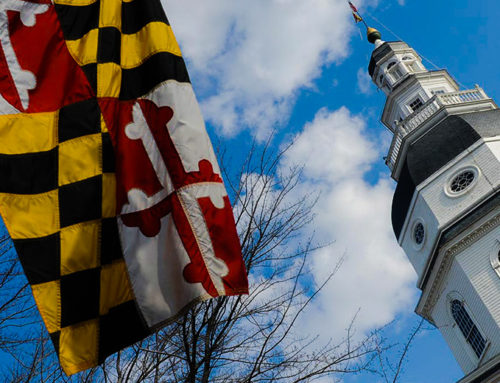View by Topic
Recent Articles
-
New Environmental Laws from the 2024 Maryland Legislative SessionSaturday, April 27th, 2024
-
EPA Designates PFOA and PFOS as Hazardous Substances under Superfund LawSaturday, April 20th, 2024
-
Federal Government Finalizes New Efficiency Standards for LightbulbsSaturday, April 13th, 2024
-
2024 IECC is Final After Addressing Preemption IssuesSaturday, April 6th, 2024
-
Settlement Portends Broad Failure in Attempts to Ban Natural GasSaturday, March 30th, 2024
View by Month/Year
“Green Building Law Update” Headlines
Recent Articles & News from
Stuart Kaplow’s blog
at GreenBuildingLawUpdate.com
- New Environmental Laws in Maryland: 2024 Brings Opportunities for Businesses April 28, 2024
- EPA Takes Action: PFOA and PFOS Now Hazardous Substances Under Superfund Law April 21, 2024
- Shedding Light on the Future: The Evolution of Lightbulbs in the Wake of New Energy Efficiency Standards April 14, 2024
- 2024 International Energy Conservation Code is Final After Addressing Preemption April 7, 2024
Subscribe to the Green Building Law Update!
Stuart Kaplow brings his expertise and extensive experience to the table with his unique digital publication, "Green Building Law Update". Subscribers receive regular updates to keep them informed about important issues surrounding Environmental Law, Green Building & Real Estate Law, as well as the emerging demand for Environmental Social Governance (ESG).
Get fresh content through the lense of Stuart Kaplow's cutting-edge expertise, innovative commentary and insider perspective. Don't miss another issue! Subscribe below.
New Zoning Variance Decision is “Much Ado About Nothing”
Much attention is being paid to a recent decision by the Court of Appeals of Maryland that vacated an order of the Wicomico County Board of Zoning Appeals because the Board improperly denied a variance request to build a hunting camp within the Chesapeake Bay Critical Area Buffer.
Front page stories in the print media herald the decision as “opening the door to anarchy in land use” and quote local zoning authorities deriding the “change in the burden of proof in variance cases,” while at least one editorial bemoans the “resultant death of life in the Chesapeake Bay.”
Noting the irony that Shakespeare chose to set an early romantic comedy in the seaport of Messina, in Sicily, a locale within “1000 feet landward from the mean high water line,” the Court of Appeals decision in Edwin H. Lewis v. Dept. of Natural Resources, is “Much Ado About Nothing.” The Court decision creates no new law and, arguably does not even seek to clarify existing law, when the Court, without even addressing the County Board’s factual findings, remands the case back to the Board to apply existing law.
Edwin H. Lewis sought to construct a hunting camp on his over 295 acres located entirely within the Chesapeake Bay Critical Area (the area extending “1000 feet landward from the mean high water line” of the Bay). Given the overlapping jurisdiction of State and County Critical Area laws, apparently any configuration of the 6 cedar log cabins supported on wood posts 2 feet above the ground required a variance from the Wicomico zoning regulations.
In a refreshing portion of this 75 page opinion written by Judge Cathall, the Court quotes a 1938 decision when it noted that “such [zoning] ordinances are in derogation of the common law right to use private property as to realize its highest utility.”
Article VI of the Wicomico County Code empowers “the Board to grant variances and noting the criteria to be considered in determining whether to grant or deny variance requests in the [Critical Area] Buffer.” Generally, variances may be granted because “special features of a site or other circumstances, a literal enforcement of provisions would result in unwarranted hardship.” The ultimate inquiry is whether applicants, like Lewis, suffer an unwarranted hardship because of special features of their property. The Court of Appeals has in the past interpreted the “unwarranted hardship” standard, as used in Critical Area law, as the equivalent of the general “unnecessary hardship” standard used in zoning variance law.
In those earlier decisions, Maryland’s highest court defined “unwarranted hardship” as ‘a denial of reasonable and significant use’ of the land. In explaining that standard, it made clear that unwarranted hardship is a lesser standard than required to prove an unconstitutional taking (i.e., denial of all economically beneficial of productive use). This Court expressly does not address the County’s rationale that no unwarranted hardship exists because of Lewis’ ability to use a pre-existing waterfowl blind located in the marsh.
The Court made clear that broad comments about environmental harm to the Chesapeake Bay by development in general, including unsupported statements by the Critical Area Commission about cumulative impact, are insufficient to rebut expert testimony that a specific project will not cause the degree of harm to the environment that supports denial of a permit.
The Court in this case held that on remand the determinative question is not whether the petitioner’s property is subject to any reasonable and significant use without being granted a variance, “but is a question of whether the requested variance is reasonable in light of the general findings in relation to the [Critical Area] criteria” listed in the County Code. “Therefore, if it is determined that the specific six cabin hunting camp proposed is a reasonable and significant use of Phillips Island, the Board may then consider whether the reasonable use is the minimum variance needed in light of the factors” enumerated in the County Code.
It could not be more clear that the Board’s order in this case was not reversed. It was vacated because “the Board committed several errors of law” including failing to consider the criteria enumerated in the County Code.
But maybe more significantly, in the aftermath of this decision, those predicting doom have overlooked that the facts in this case arose prior to to the legislature’s 2003 enactments altering the standard for a variance in the Critical Area.
Pandora’s box remains closed, the Chesapeake Bay is not about to be paved, there has been no substantive change in law, and despite widespread assertions to the contrary, the new variance decision is “Much Ado About Nothing.” That said, politics being what it is, it can be anticipated that in response to this decision the legislature will again seek to further limit variances in the Critical Area.









